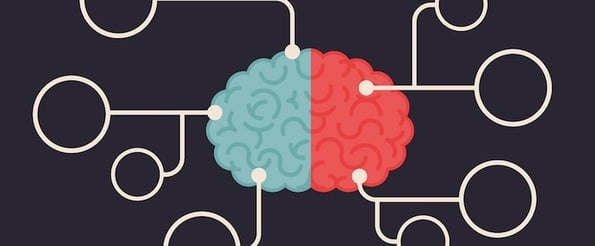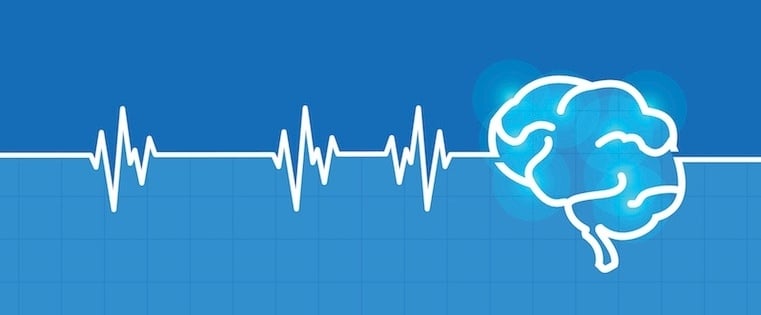

Philosophers, then psychologists, and, more recently, neuroscientists have been trying to explain how people think and make decisions for centuries.
From all of this work, there’s one key concept we need to understand. People aren’t always rational, and that’s because, in large part, we all have at least two ways of thinking and making decisions.
As salespeople, your natural tendency is often to focus purely on rational argument -- features, specifications, pricing, discounts, company capability, and so on. This ignores that most of our decision-making that is non-conscious -- according to Harvard scientist Gerald Zaltman, as much as 95%.
Scientists have divided our thought processes in various ways. Let’s take a brief look at four common dichotomies.
1) Right Brain vs. Left Brain
Work by Nobel Prize winner Roger Sperry and other neuroscientists showed that our brain hemispheres have somewhat distinct roles. The initial research was done with subjects whose hemispheres had been surgically separated.
The left hemisphere, they found, tends to be associated with logic, math, and verbal skills.
The right hemisphere tends to be associated with emotion, music, and art.
Pop psychologists seized on this research and launched a thousand books about “tapping into your right brain” and similar topics that over-simplified how our brain hemispheres interact.
In reality, most thought and decision processes involve multiple brain areas in both hemispheres. One never sees an fMRI brain scan or EEG brain wave display in which one hemisphere is lit up while the other is completely dark.
Furthermore, our brains are highly adaptable. If we suffer a brain injury, our brains can often redistribute responsibility for key functions to other areas.
Neuroscientists tend to downplay the popular left brain/right brain stereotype, but I include it here because it’s the most familiar dual brain concept for many of us.
2) Lizards vs. Lemurs
Another approach that you may have heard of divides the brain into three parts. The “triune brain” theory refers to the reptilian, old mammal, and new mammal brains.
The highest level of thinking takes place in the new mammal brain, with the reptilian brain handling things like aggression and sexual desire.
The triune brain theory is mostly out of favor among scientists today, but it surfaces often in marketing and sales discussions due to its emphasis on non-conscious behaviors and decision-making.
When people talk about “selling to the lizard brain,” (or, sometimes, the “dinosaur brain”), they are referring to this theory and suggesting that to be persuasive you need to appeal to very basic human instincts.
3) System 1 vs. System 2
The most widely accepted division of thinking and decision-making today comes from Nobel Prize winner Daniel Kahneman. His bifurcation of human thought isn’t rooted in brain structures, but rather how we think.
System 1 is a thought process that is fast, intuitive, and often based on emotion. It may also rely on rules developed in previous experiences. These rules are called heuristics, and are mental shortcuts that avoid consciously re-evaluating something.
System 2 is what most of us think about when we think about thinking. (Got that?) It’s the rational process where we look at pros and cons, evaluate alternatives, analyze specifications, and think about consequences.
If you are choosing a restaurant, and say, “I feel like Mexican!” you are using System 1. If you start narrowing your choices based on what you know about the preferences of other members in your group, how much money is in your wallet, how much time you have, and so on, you are using System 2.
One of Kahneman’s key insights is that our brains are lazy.
That isn’t an entirely bad thing. Our brains already consume an outsized portion of our body’s total energy, and we unconsciously strive to conserve that energy.
One result of this drive for energy efficiency is that our brains look for shortcuts when presented with the need to make decisions.
You need to understand this preference and adjust your strategies as needed. System 1 is quick and energy efficient. If we can make a decision based on past experience, emotion, heuristics, or any other built-in “programs,” we’ll do that. System 2 is hard work and consumes precious energy. We are capable of making mental spreadsheets of pluses and minuses. We can compare probable outcomes and consequences. But, if we don’t have to do that work, we won’t.
4) Conscious vs. Non-Conscious
This is my preferred split, and one used by much of the consumer neuroscience industry. Conscious and non-conscious map, more or less, to Kahneman’s System 2 and 1.
People almost always have multiple influences when they make a decision. Some are conscious. For example, a product has to work for the intended purpose. It has to fit within the available budget. We may want it to have better reviews and expert ratings than other products.
Non-conscious influences are those we can’t or won’t articulate. They may be based on emotion. They may be due to one or more of the dozens of cognitive biases scientists have uncovered. They may be the basic impulses that evolutionary psychologists talk about.
For example, if asked why a brand of beer is our favorite, we will probably say we like its taste. In reality, we choose it over similar-tasting beers because its brand image is consistent with our self-image or aspirations.
We probably won’t admit to being influenced by a celebrity endorsement or a sexy model promoting the product, but these are typical non-conscious influences that do, in fact, affect our behavior.
In Each Model, Both Kinds of Thinking Are Important
It’s tempting to think we can focus on one type of decision-making process. The most common error is to emphasize logical points of persuasion, like features, benefits, and price.
A few products, like fragrances, rightly design their ads to appeal entirely to emotions and non-conscious processes. When was the last time you saw a perfume ad that claimed it was “rated as better-smelling by 72% of fragrance wearers?” Or pointed out that it “costs 25% less than the leading brand?”
Most purchasing decisions, whether business-to-consumer or business-to-business, have both conscious and non-conscious components. Products have to work, but when multiple products can satisfy the basic criteria, non-conscious factors come into play.
Even when a decision is made based on non-conscious factors, conscious factors can play an important role in justifying the decision.
To practice your powers of persuasion, download my free Persuasion Slide workbook here.
Editor's note: This post is excerpted from "The Persuasion Slide: A New Way to Market to Your Customer's Conscious Needs and Unconscious Minds" and is republished here with the author's permission.

![The Psychology of Customer Perceived Value [Infographic]](https://www.hubspot.com/hubfs/380_Customer%20Perceived%20Value.png)




![7 Cognitive Biases Salespeople Must Know to Close Deals [Cheat Sheet]](http://53.fs1.hubspotusercontent-na1.net/hubfs/53/00-Blog_Thinkstock_Images/cognitive-biases-close-more-deals-cheatsheet-514637-edited.jpg)


![20 Weird Cognitive Biases Influencing Your Buyer's Decision [Infographic]](http://53.fs1.hubspotusercontent-na1.net/hubfs/53/biasstockphoto.jpg)
